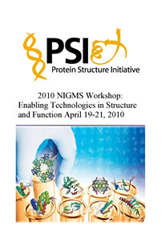This year, I’m the lucky NIGMS program director attending the 60th Annual Lindau Nobel Laureate Meeting in Lindau, Germany. Like John Schwab, who traveled with last year’s group, my main job is to help the 16 super-energetic, really smart graduate students we sponsored interact with each other, hundreds of their peers from all over the world and, of course, dozens of Nobel laureates.
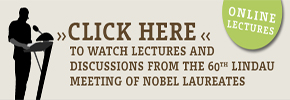
The Lindau meeting, which started in 1951, is designed to “educate, inspire and connect” generations of scientists by bringing together Nobel laureates with young researchers. Unlike last year’s meeting, which focused on chemistry, this year’s is more interdisciplinary. It showcases all three of the Nobel Prize natural science fields: chemistry, physics and physiology or medicine.
As you might imagine, the competition for student slots is fierce, with more than 40,000 applying for 650 slots this year. The U.S. contingent consists of 75 students supported by the Oak Ridge Associated Universities (ORAU), the National Science Foundation, the Department of Energy, Mars (the company, not the planet!) and NIGMS/NIH.
It’s quite appropriate that NIGMS is involved in this program again this year. Our portfolio of funded research is extremely diverse, including a lot in chemistry and physics. After all, an interdisciplinary approach can help us better address problems relevant to human health. And around NIH, NIGMS is also widely called the “Nobel Prize Institute”—we’ve funded the Nobel Prize-winning of research of 73 laureates, and some of them are here in Lindau.
So far, the trip is going pretty well. We’re surrounded by World Cup fever! We haven’t had much of a chance to meet the laureates yet, since the opening ceremony was just on Sunday. I know that much of the close laureate-student interactions will take place through small group discussion sessions set up for this purpose.
I truly feel fortunate to be here—for the interactions, the interdisciplinary science and what I anticipate will be really inspiring lectures by the laureates. But even if you can’t be here, you can still watch the scientific proceedings online and follow the meeting using a variety of social media.
Post submitted from Lindau, Germany, on Monday, Jun 28, 2010 6:25 PM CEST


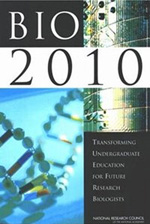 Last month, I attended the “Beyond Bio2010” conference held at the National Academy of Sciences. The meeting highlighted the progress made in implementing the Bio2010 recommendations, chiefly to transform undergraduate biology education by using the quantitative sciences (mathematics, chemistry, physics, engineering and computer sciences) to study biology and vice versa.
Last month, I attended the “Beyond Bio2010” conference held at the National Academy of Sciences. The meeting highlighted the progress made in implementing the Bio2010 recommendations, chiefly to transform undergraduate biology education by using the quantitative sciences (mathematics, chemistry, physics, engineering and computer sciences) to study biology and vice versa.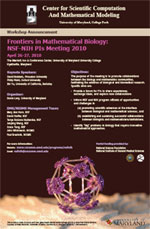 Last week, I attended the PI’s meeting for the Joint DMS/NIGMS Initiative to Support Research in the Area of Mathematical Biology, a program managed by us and NSF’s Division of Mathematical Sciences. A key goal of the program is to bring mathematicians and new mathematical approaches into the core of biological and biomedical research.
Last week, I attended the PI’s meeting for the Joint DMS/NIGMS Initiative to Support Research in the Area of Mathematical Biology, a program managed by us and NSF’s Division of Mathematical Sciences. A key goal of the program is to bring mathematicians and new mathematical approaches into the core of biological and biomedical research. Registration is now open for our second Quantitative and Systems Pharmacology Workshop, which will be held September 9-10 on the NIH campus in Bethesda, MD. The meeting is intended primarily for pharmacologists, pharmacokinetic/pharmacodynamic modelers, systems biologists and others working in fields relevant to this emerging discipline.
Registration is now open for our second Quantitative and Systems Pharmacology Workshop, which will be held September 9-10 on the NIH campus in Bethesda, MD. The meeting is intended primarily for pharmacologists, pharmacokinetic/pharmacodynamic modelers, systems biologists and others working in fields relevant to this emerging discipline.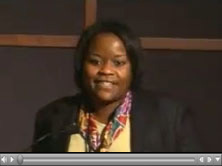 As you may recall from an earlier Feedback Loop message, NIGMS hosted its first workshop to help postdocs successfully transition to independent positions. We just posted videos for all the presentations.
As you may recall from an earlier Feedback Loop message, NIGMS hosted its first workshop to help postdocs successfully transition to independent positions. We just posted videos for all the presentations.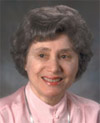 Since I first wrote about the death of former NIGMS director Dr. Ruth Kirschstein, plans have progressed for a daylong commemorative event on Monday, May 17, at NIH. The program will include several remembrances as well as scientific presentations and posters by recipients of the Ruth L. Kirschstein National Research Service Award.
Since I first wrote about the death of former NIGMS director Dr. Ruth Kirschstein, plans have progressed for a daylong commemorative event on Monday, May 17, at NIH. The program will include several remembrances as well as scientific presentations and posters by recipients of the Ruth L. Kirschstein National Research Service Award.
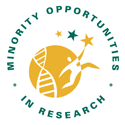 I want to let you know about recent changes to our Minority Biomedical Research Support Research Initiative for Scientific Enhancement (MBRS RISE) program and about two upcoming technical assistance workshops.
I want to let you know about recent changes to our Minority Biomedical Research Support Research Initiative for Scientific Enhancement (MBRS RISE) program and about two upcoming technical assistance workshops.